V-8 or EV: How do you want your MGB?
To BEV or not to BEV, that is the question the classic car world’s resto-mod community is currently battling with.
Whether ’tis nobler in the mind to suffer the slings and arrows of internet commentators and go electric, or take arms against the environmentalists and stick with internal combustion?
Right now, the modders are split into two tribes. In one you have the likes of Everrati, Electrogenic, RBW, Lunaz, and Sacrilege Motors, replacing engines with e-motors. In the other it’s Theon, Icon, Singer, KAMM, and the like, upgrading ICE to give classic cars a modern punch of performance.
Hedging its bets somewhat is Britain’s Frontline Cars with a new pairing of updated MGBs. Frontline was established in 1991 by racer and engineer Tim Fenna, who built the business on restorations before launching his own modernized take on the MGB to celebrate the model’s 50th anniversary in 2013.
The company’s LE50 featured a two-liter Ford Duratec engine and Mazda Miata gearbox, uprated suspension and brakes, and a redesigned interior for the MGB GT. All 50 were sold and led to 25 Abingdon Roadsters of a similar specification.
Now, as the B celebrates 60 years, Frontline has once again (actually twice) reinvented the British classic.

First there’s the LE60, Fenna’s take on the MGB GT V-8. Now with a 4.8-liter engine instead of the original’s 3.5, and putting out a whopping 375 hp, it’s a muscle car in miniature. Compared to a factory B, it’s significantly bigger, mind. Frontline’s Coke-bottle rear fenders actually widen the track by ten inches, yet it looks natural, rather than steroid-stuffed.
Other visual differences include a de-bumpering, bonded front and rear quarter-lights, LED headlights with built-in indicators, and a more aggressive fascia with additional cooling vents. 16-inch black Dunlop alloys with center-lock hubs, a significantly lower stance, and twin rear tail pipes complete the look. The steel-gray paint is immaculate.
“We wanted this car to look different, to be immediately recognizable as a Frontline and not just a nice example of an MGB,” says Fenna.
No MGB has ever had a cabin quite as splendid as the LE60. Each of the 30 cars to be built will be fully customizable, but the baby Bentley-like interior of the car’s first prototype is beautiful. Bridge of Weir leather wraps almost every surface giving an air of luxury unheard of in any MG before. The dash is a single piece of metal, with inlaid Smiths instruments and unmarked aircraft-style toggle switches for lights, heating, and the like. A wood-rimmed wheel is complemented by a gorgeous layered wooden gear knob. The rear seats are removed to create a capacious shooting brake–style luggage area, trimmed in more leather with added non-slip runners.
The level of craftsmanship achieved in-house at Frontline’s Abingdon workshop, not far from MG’s original factory, is stunning and goes a long way to explaining the £176,000 ($213,000) price tag. It is a wonderfully inviting interior.
The English weather, however, is rather less so and my drive is more like a river cruise at times, with standing water up to the axles on several occasions. Today isn’t an opportunity to test Frontline’s claim that the LE60 can accelerate to 62 mph in less than four seconds, while even getting to within 100 mph of the car’s top speed is unlikely.
Frontline spent three years developing the V-8, which is based on the Rover 3.5. They developed a bespoke cylinder head, a unique inlet plenum, and equal-length headers feeding a straight-through exhaust. Roller cams, forged pistons, a balanced steel crank, and a custom engine management system with a drive-by-wire throttle are also fitted, along with a 3.5-bar fueling system.
There’s a custom bell housing to allow the fitment of a five-speed Tremec transmission and a limited-slip differential. Fully adjustable Nitron dampers are installed all around, while the suspension gets Fenna’s own six-link setup for the live rear axle. Braking is by discs with powerful six-piston front calipers and four-piston rears.
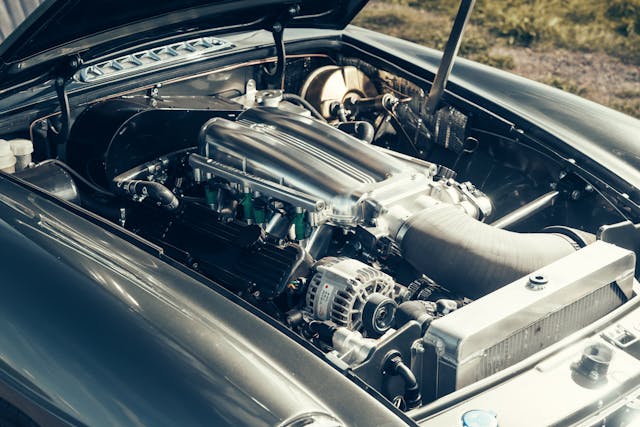
Out on the rain-soaked roads, it’s easy to lollop along on the engine’s torque, but once in a while, between cloudbursts I drop down a gear to get a brief blast of the car’s prodigious power. The Tremec shifter is a delight, with a short, sharp action, although the pedal spacing makes it hard to heel-and-toe for a smooth downshift.
The electric power steering is well-calibrated—a little odd just off-center, but then it loads up nicely as cornering forces and speed build. Looking at the LE60’s squat stance I’d expected a stiff ride, but it’s actually very compliant, deftly soaking up sketchy surfaces and seemingly keeping body roll in reasonable order.
I’d love to have more time—and in better weather—to learn more, but back at the workshop waits the Frontline MG BEE.

Fenna himself says he was a skeptic, right up until the point he drove the first prototype of the BEE (B EV Edition). It was customer demand for an electrified MG that drove development but Fenna says he wanted to ensure that the car would be true to his vision.
“I think the drive for us has been more about the pleasure of driving, rather than just the fact it’s an EV. What we really wanted to do is ensure that you still feel engaged with the vehicle, you feel like you’re going for drive, you feel joyful about the journey, rather than just going from A to B.”
That’s why, in an unusual move, Frontline’s electric MG comes with a manual transmission and three pedals. The gearbox is the tried-and-tested Miata unit that was used in the earlier LE50, mated to a Hyper9 100-volt electric motor with around 120 horsepower.
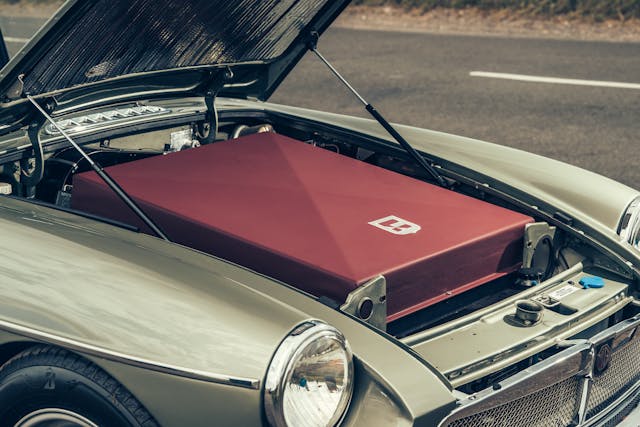
The ceramic/organic clutch is only needed when you’re actually swapping cogs, not when starting and stopping, which takes a little getting used to, but once on the go, it’s completely intuitive. There’s no enhanced sound, but nonetheless as the motor spins up to its 9000-rpm limit you instinctively feel when it’s time to shift. Use all the oomph available and it will do 0–62 mph in 8.5 seconds and top 120 mph.
The instant torque at zero revs nature of the electric motor means that first gear is rarely required, while you could in theory just plonk into third and drive all day without shifting at all. This might be the best of both worlds, offering the interactive enjoyment of a manual when you’re tackling twisty roads and the convenience of a single-speed auto to take on traffic.
Frontline has kept the mass down to 2615 pounds, which is 154 less than the original MGB, and positioned its batteries for a 50:50 weight distribution. The current batteries give a range of 140 miles, but Frontline is already working on a next-generation variant that will boast double the range (and performance) without increasing the weight. As it is, the BEE is lively enough, and it genuinely does offer an additional element of driver engagement over other EV conversions.
Despite Frontline’s own doubts about going electric, Fenna and his colleagues say they’ve fallen for the car—and customers are doing the same. One buyer who had booked his LE50 in for a service told Frontline to keep the car and convert it. Unlike the LE60, the BEE won’t be limited in production and will be available as a Roadster as well as a GT, with prices from around £120,000 ($145,000).
Frontline’s future may not be limited to electric, however, with Fenna confirming that he’s working on a hydrogen-powered version of the V-8. Could that be the solution to bring the two rival tribes together?

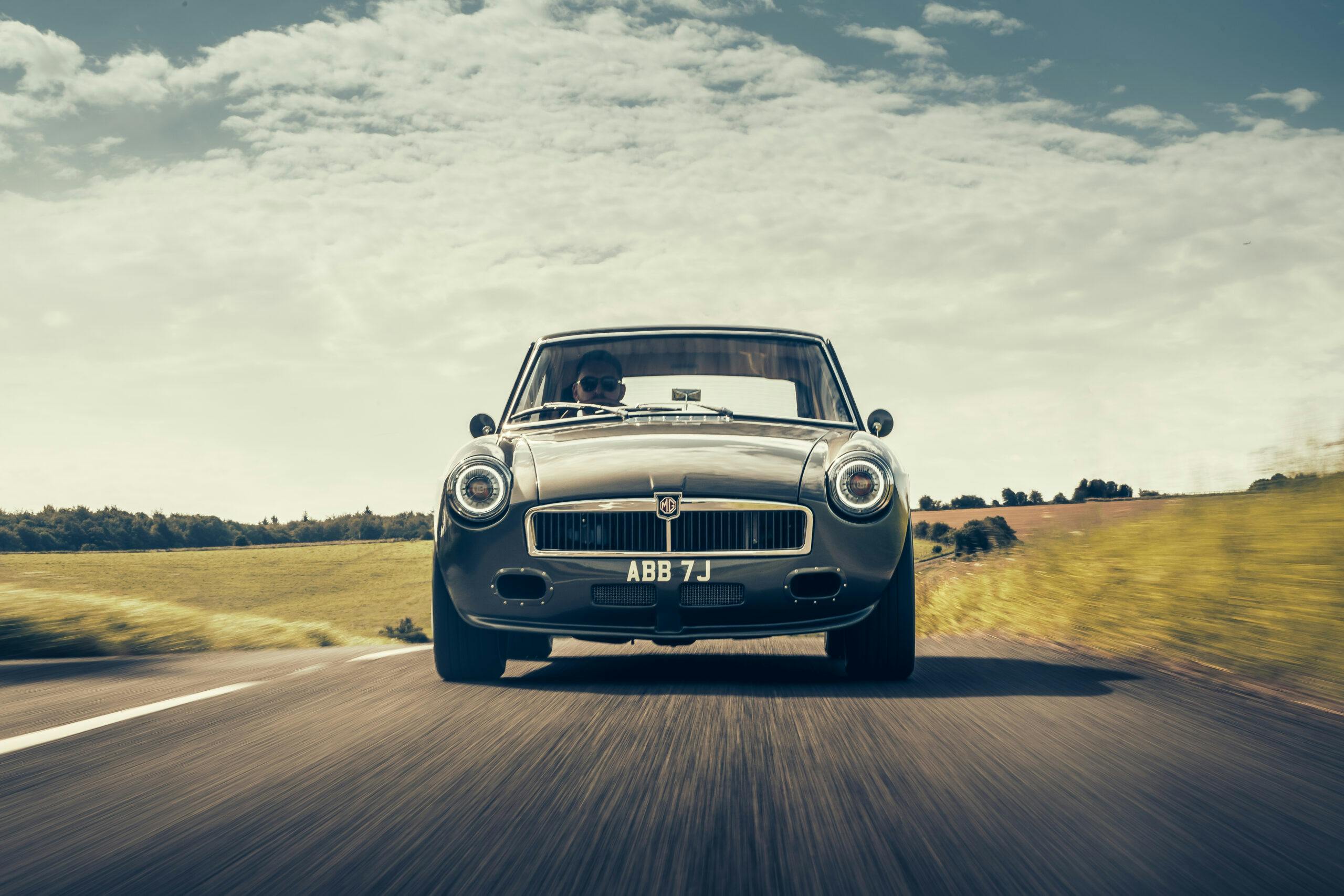
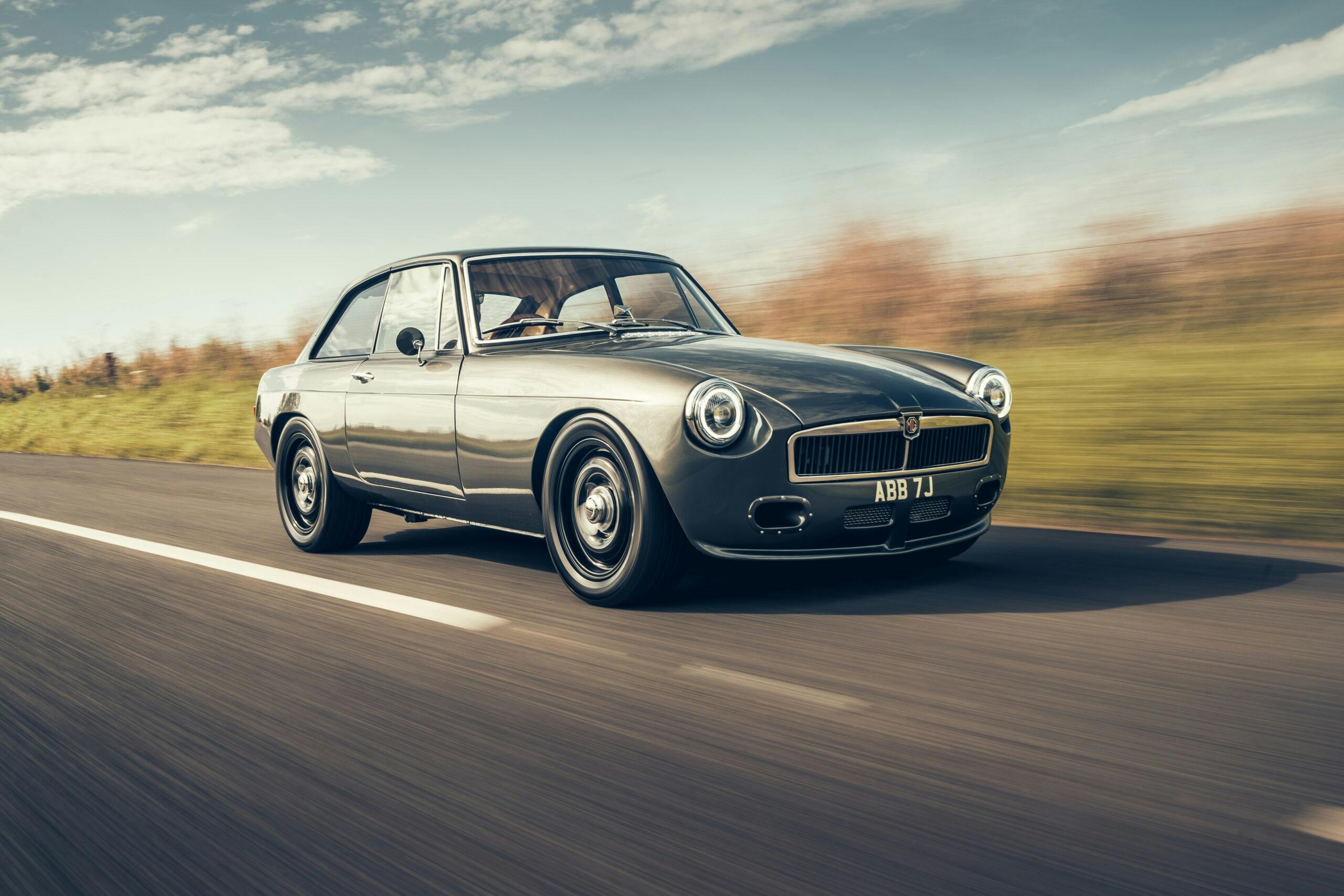
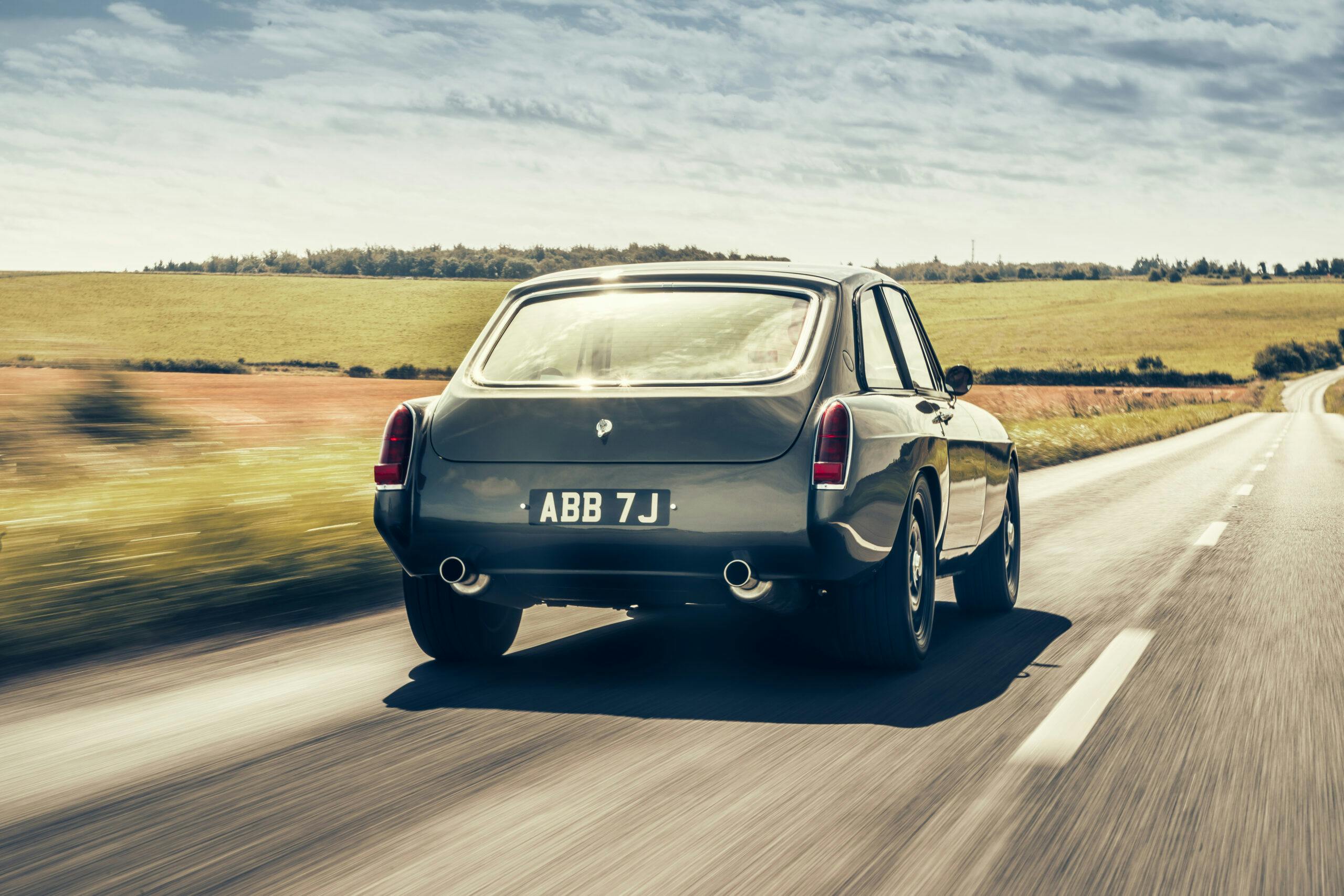


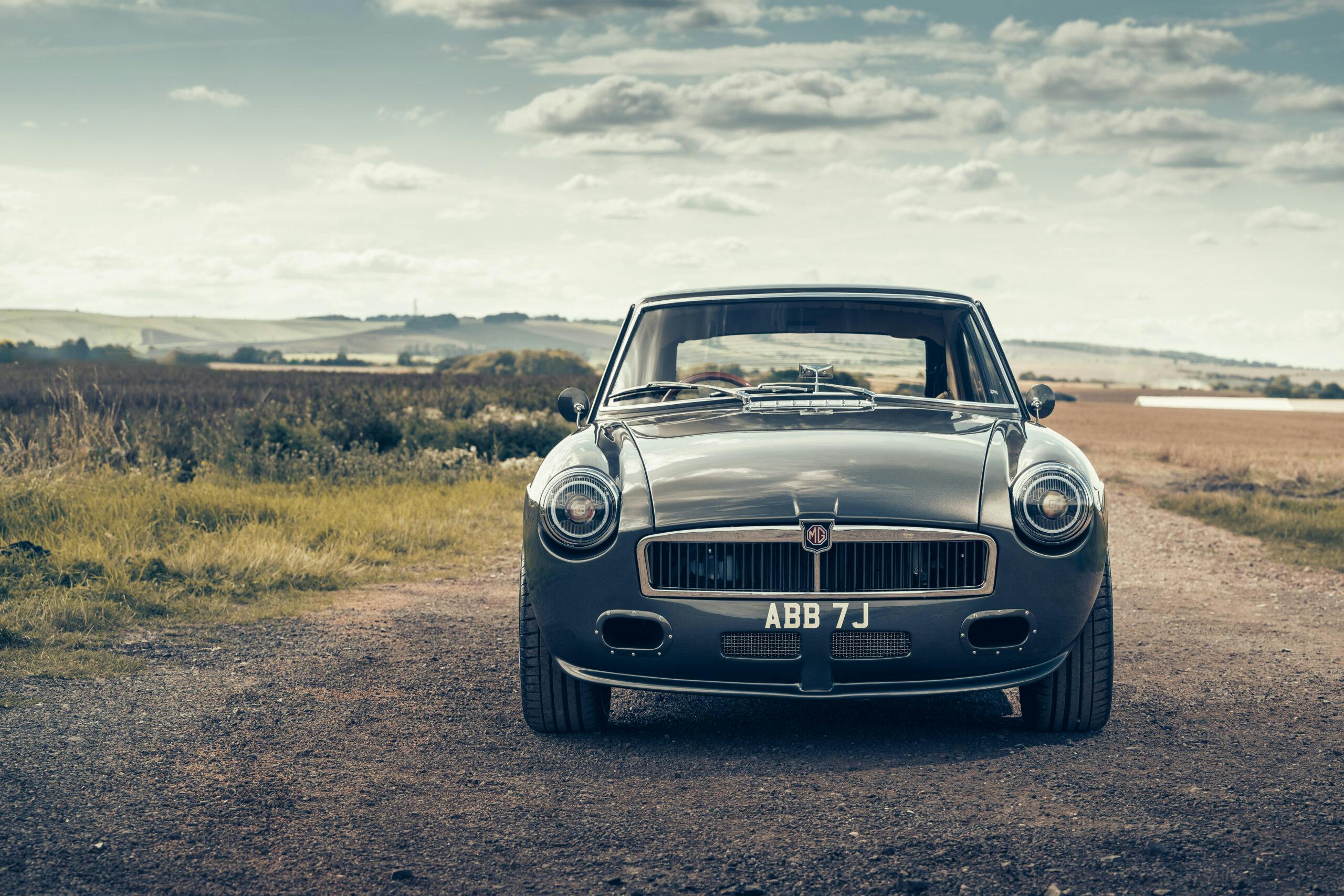
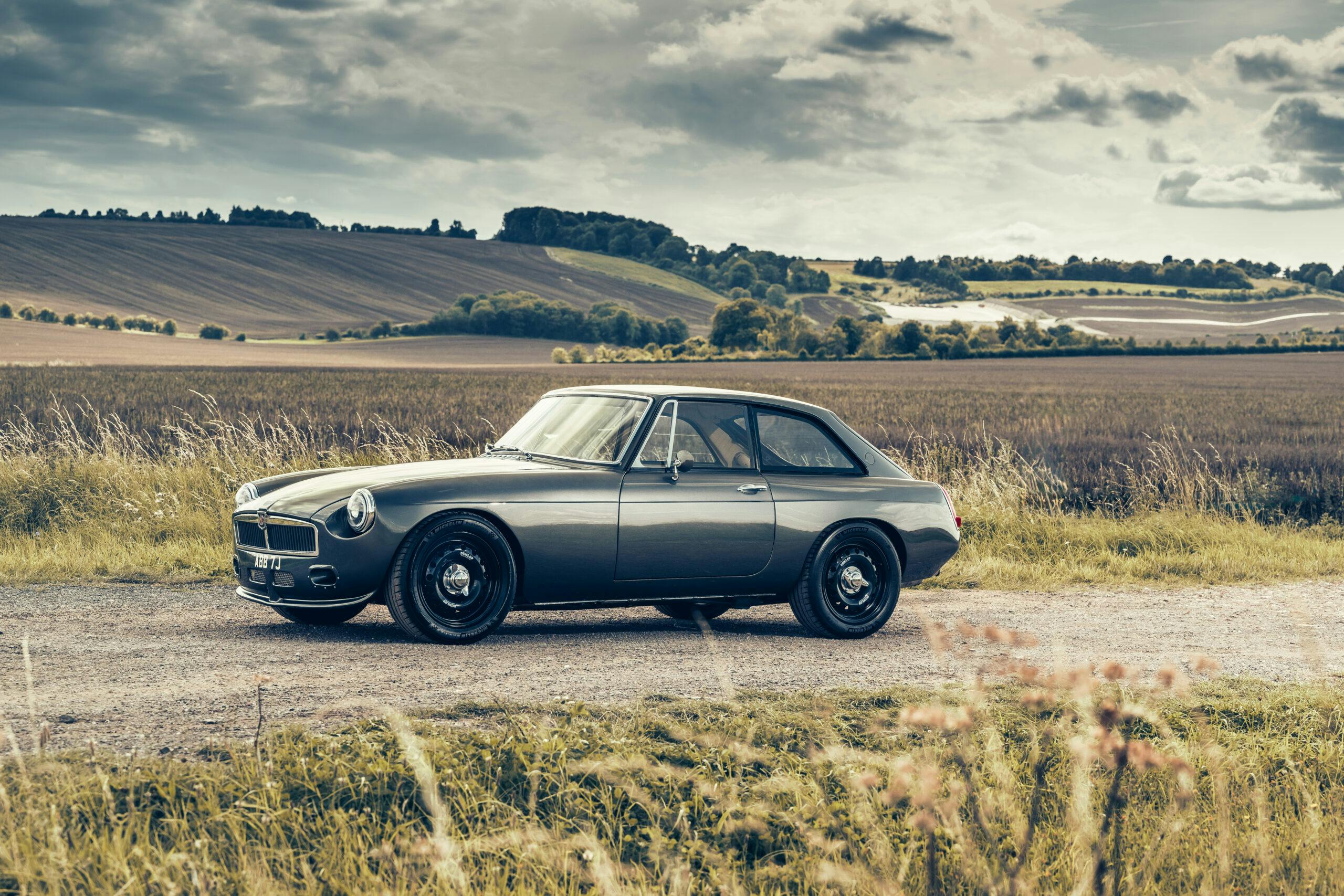

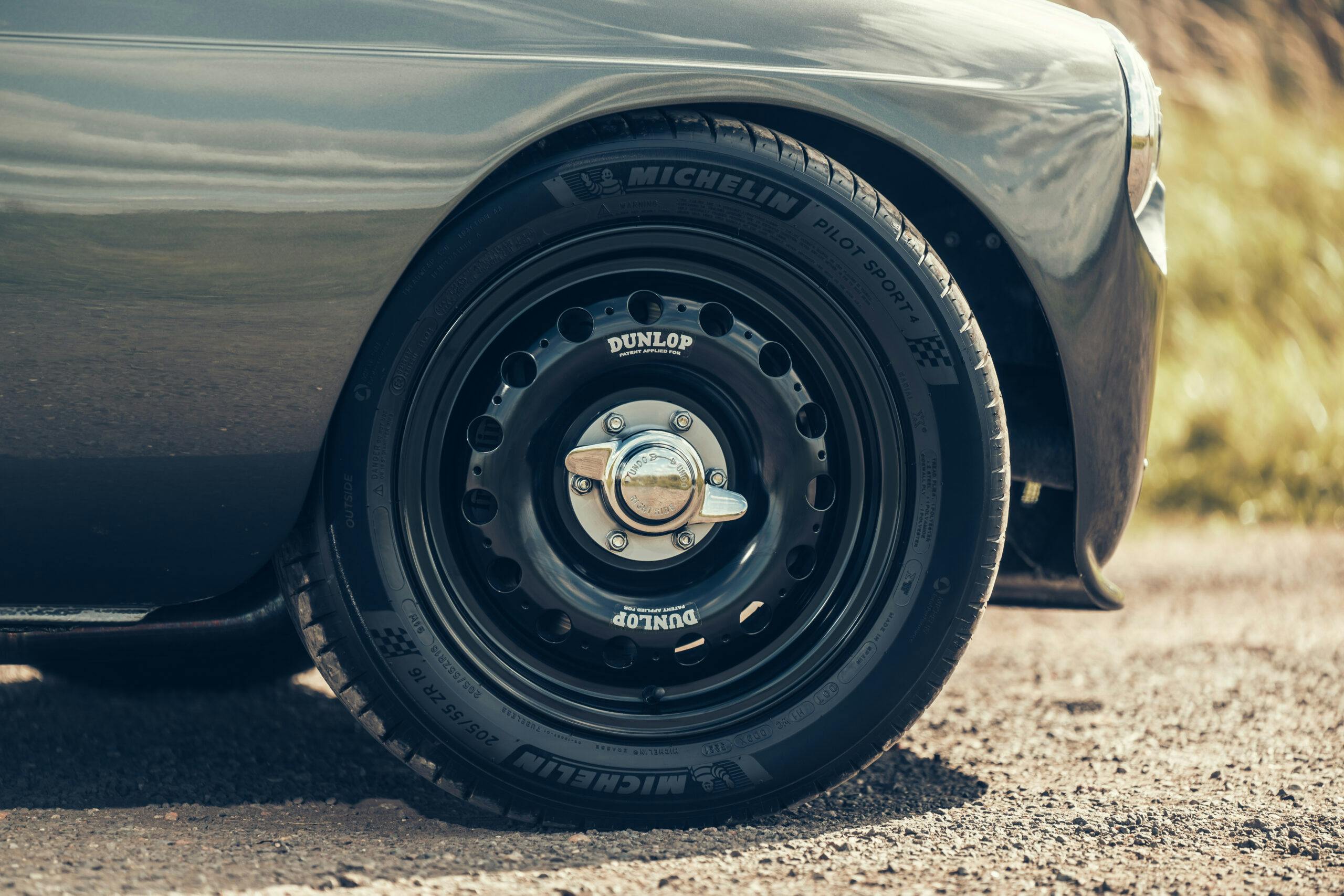
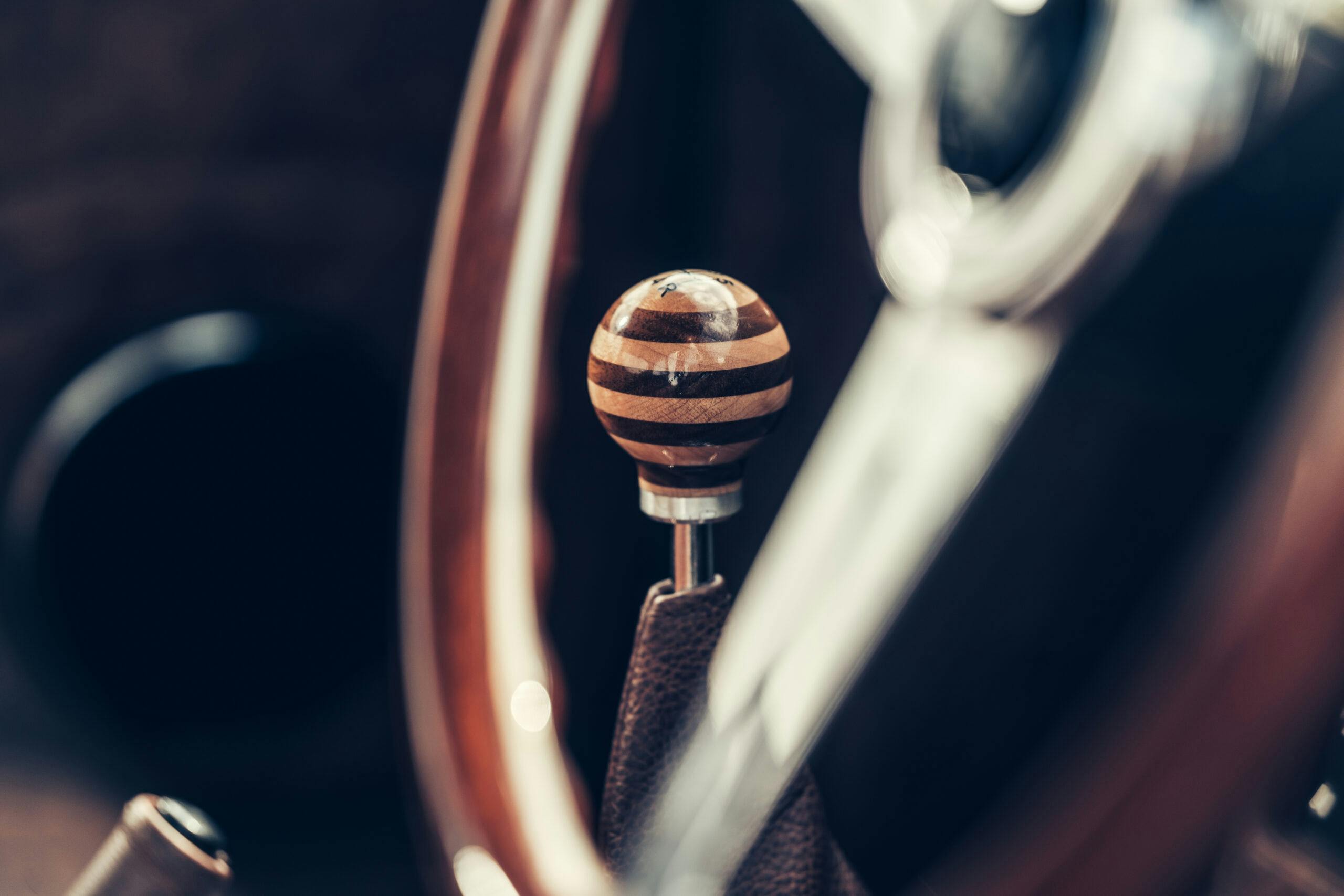
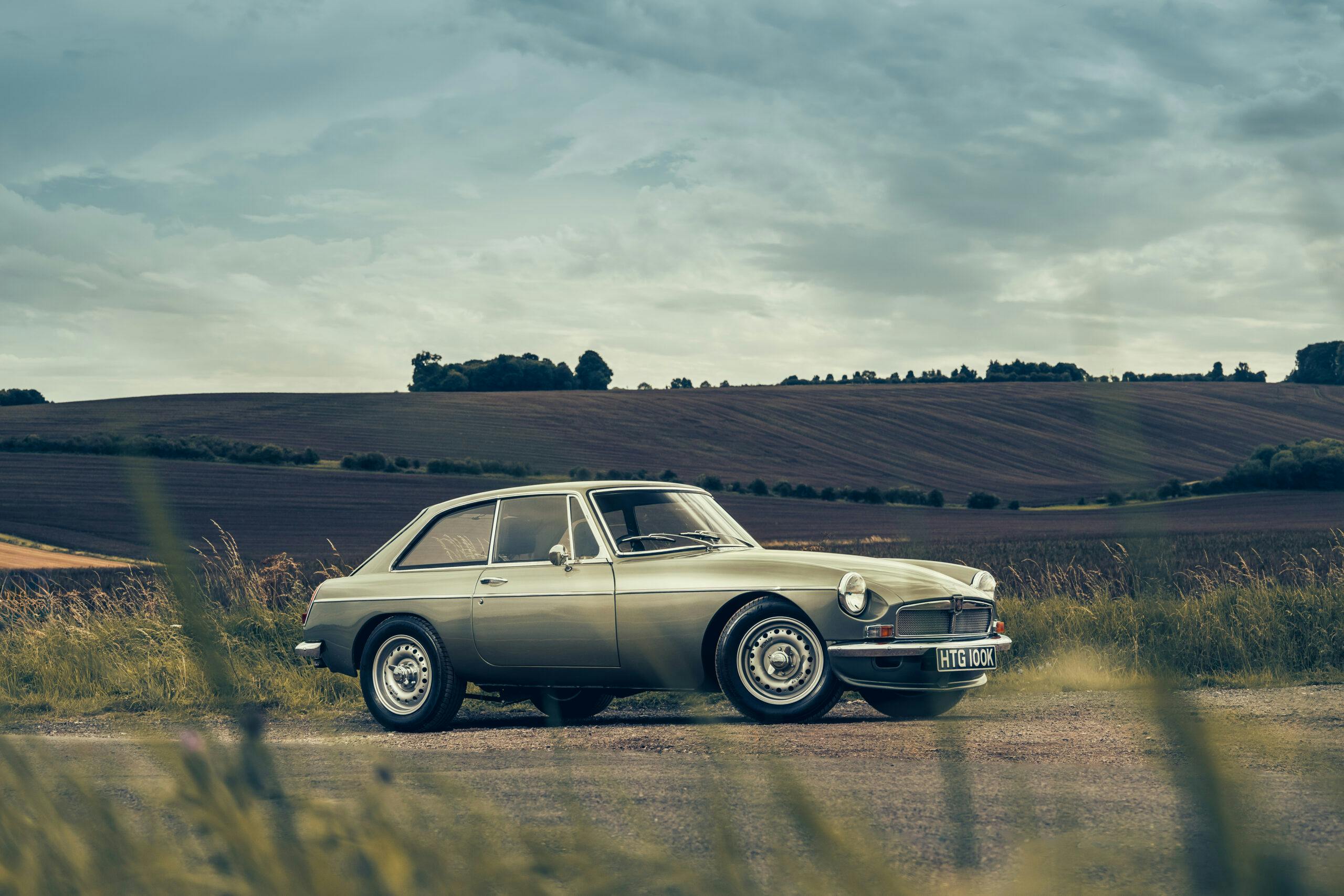
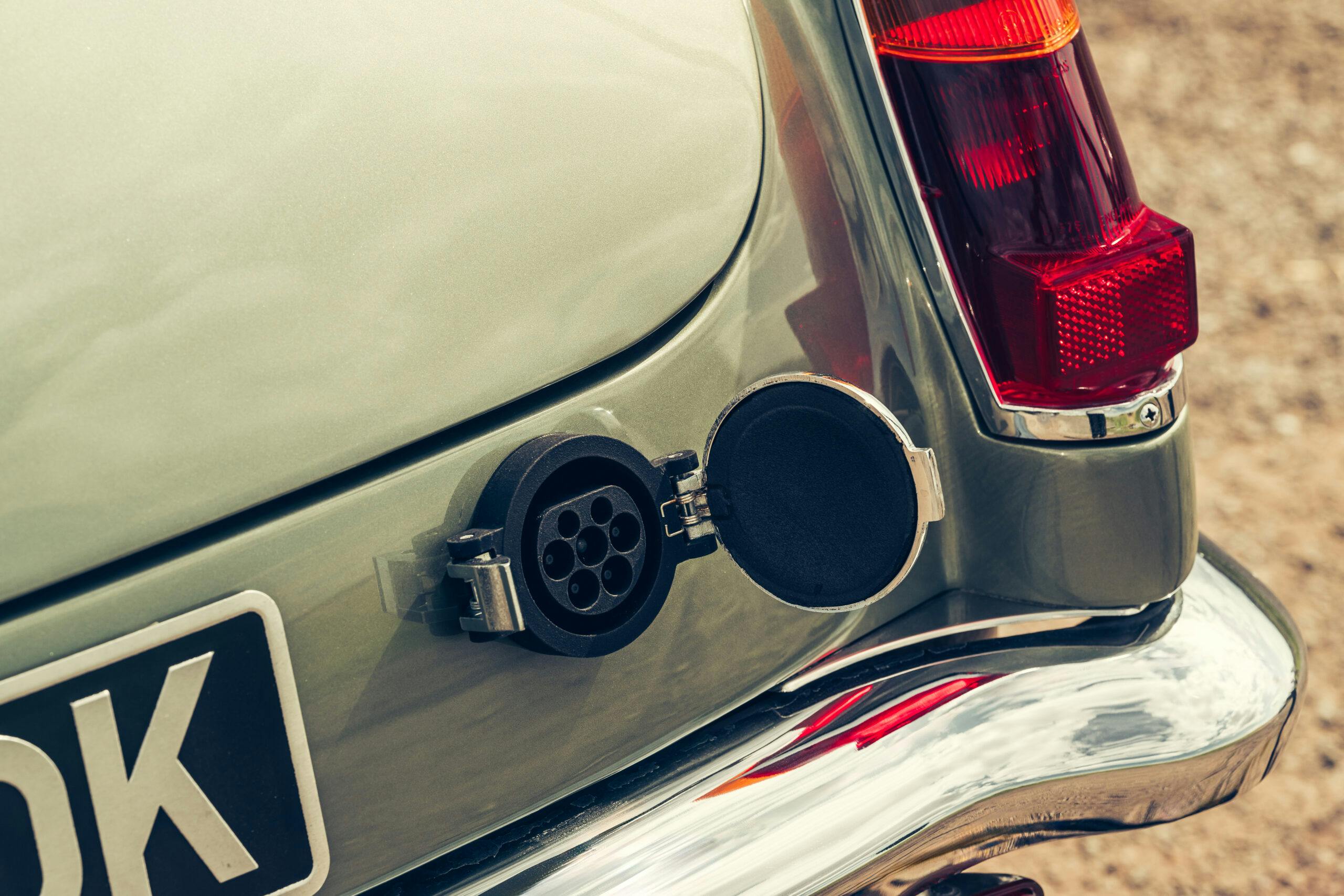



The answer is…. yes.
I would be fine with just a 4 but never an EV. What is the point to desecrate a car with just a system that was never engineered for it.
V8 or EV? This is a question? V8, there is no EV. Let’s lard this thing up with batteries.
I am sorry these; in my personal opinion, look like bastardized MGB GT’s.
I own a ‘1969’ MGB roadster manufactured for the North American market.
To own a MG one must recognize and accept the deficiencies of these original cars.
The two above (the EV and the V8) are not true MG’s.
They are facsimiles, and do no justice to the original brand name.
I guess when you observe how the majority of MGB owner’s actually use their cars you may find the cars are sitting 99% of the time waiting to be driven a few miles on a fine weekend day. EV would probably be a better fit with how they use the car. For the rest of us die-hards soaked in gas and Castrol R and loving it, remember, every MGB EV conversion frees up another MGB engine for us to use as spares. They haven’t made them for a long, long time and good 5-main blocks and cylinder heads are becoming thin on the ground.
Setting aside for a moment the fact that there’s a special place in hell for people who electrify classic cars, the BEE is pointless. You can get the same performance by putting a $5000 supercharger on a stock MGB. The LE60 is a different animal. It’s beautifully done, and the performance is exceptional, but there are a lot of other performance cars I’d rather have for that kind of money.